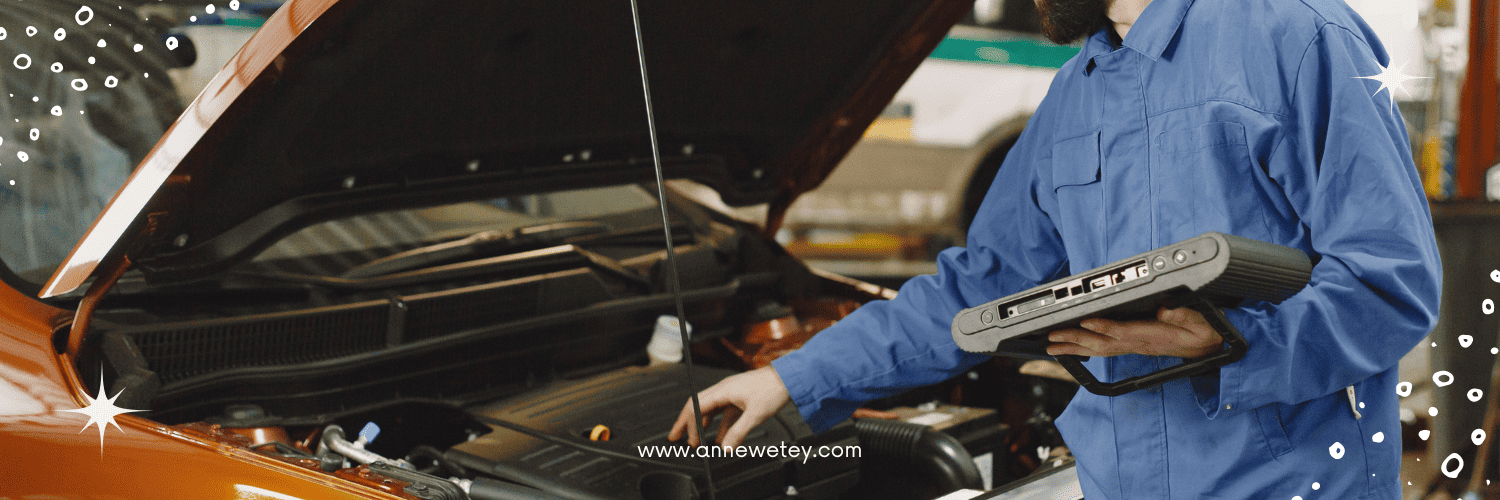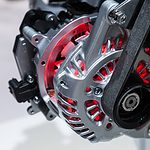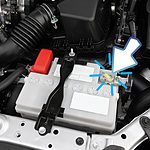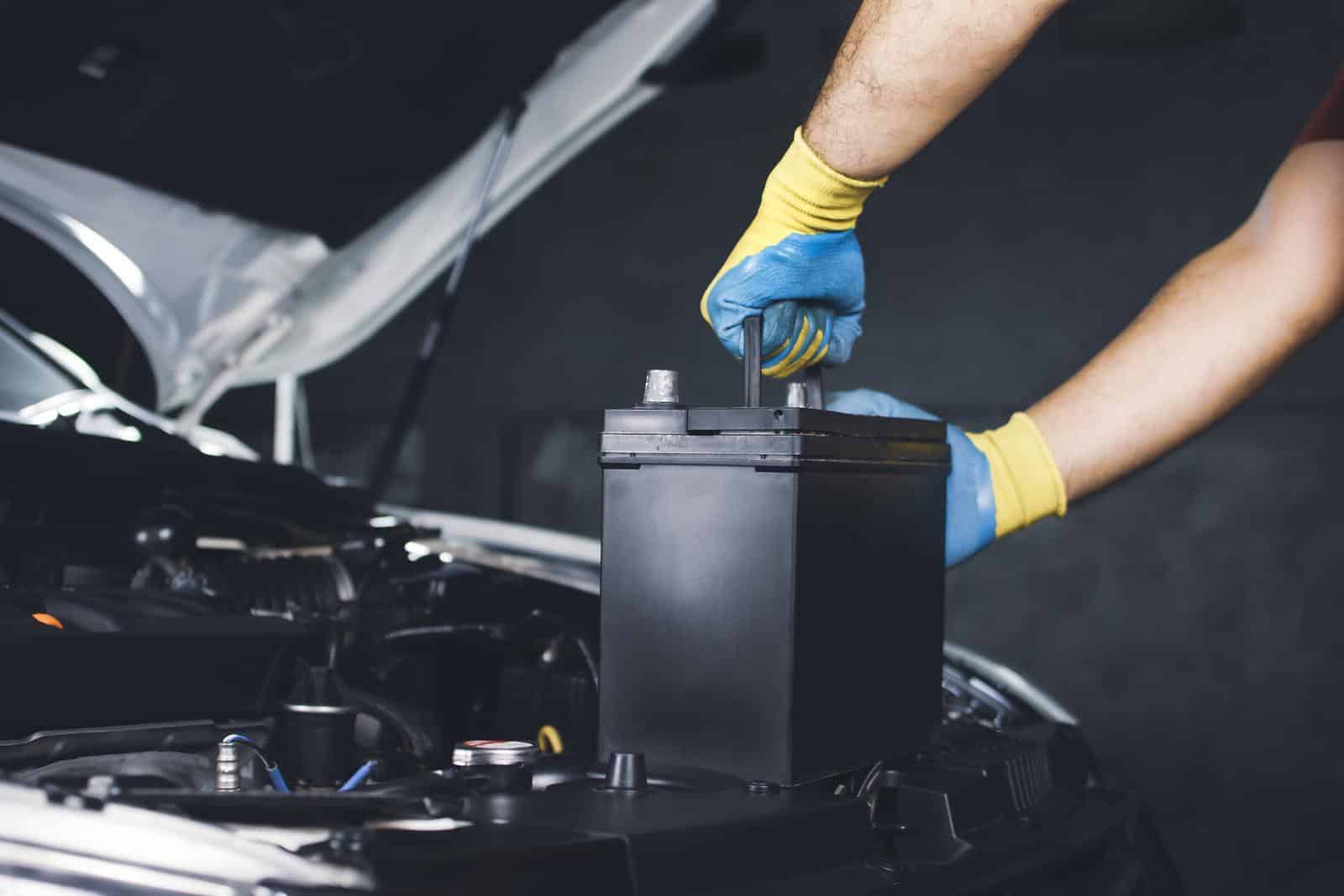Learn How to Fix a Crack in Your Car Battery
Introduction

Many people think they can just use some superglue to seal up a leaky battery, but this doesn’t actually work. If your only choice is to attempt to repair a crack in your battery, then read on. This article will show you the two proven ways to get a long-lasting fix for a leaking battery.
However, the best way to fix a leaky automobile battery is to replace it with a new one. A leaking battery may still start your car but it is still a “bad battery” especially when you consider how much damage it can cause to your car and the environment.
Four reasons why gluing a battery case doesn’t last:
- Acid will eat away at the glue,
- Batteries build up a internal pressure because of gases produced as they are being charged. Over time, this pressure will reopen the crack.
- Battery casing is made from reprocessed polypropylene. Most common glues and sealants (e.g. gorilla glue) don’t adhere very well to this type of plastic.
- Vibration as the car moves may cause the repair to crack again.
Why stop a battery leak as soon as possible?

A crack in your car battery will cause the battery electrolyte to leak out into your car and other surrounding areas. Battery acid can cause extensive damage to your engine, paintwork and driveway or garage floor. It is a highly corrosive fluid that can cause serious bodily injury and even blindness. A leaking battery will soon become a dead battery. If your battery leaks too much fluid, it will stop working.
There are four major reasons a car battery may leak: battery cell expansion (because of sulfation, battery overcharge or old age), overfilled battery chambers, unsecured battery or a crack in the battery casing.
This article only deals with how to fix a crack in your lead-acid car battery. We do not discuss how to repair a lithium battery or alkaline batteries.
There are two main types of batteries. The first is a serviceable type, which needs to be topped up with distilled water occasionally. The second is a sealed maintenance free battery pack which cannot be opened. Each type of battery needs to be handled differently when it comes to repairing damage to the battery casing.
Can you continue to use a cracked car battery? You may continue using your car battery for sometime even with a crack in it so long as the leakage is not too far below the acid line and there is still some fluid left in the battery chamber. However, it is shocking how much damage battery acid can do in a short time. Do not just ignore a leaky battery.
Should you replace a leaking car battery? Yes, if you have the means to replace a leaking battery, then replacement is the best option. Battery replacement costs are cheap compared to the cost of repairing damage to your vehicle and surrounding.
You can also attempt to repair the leak. Fixing a crack in your lead acid battery can be a simple project, but only if there is no other option. I’ve repaired cracks on a couple of batteries for clients in a bind. However, you need a fantastic reason to take the risk of doing a repair that has a high rate of failure and a high risk of injury. If you still want to go through with this, then proceed.
Safety tips when working on a car battery
- Protect your skin and eyes from any contact with battery acid. Battery acid can blind and cause serious bodily harm.
- Always have plenty of water at to wash off any drops of acid. Mildly soapy water or a solution of water and sodium bicarbonate (baking solution) is highly recommended.
- Remove the battery from the car by unscrewing the terminals and neutralize the battery compartment and outside of the battery itself by washing with plenty of water and/or a neutralizing solution. Pay special attention to the battery terminal posts. You may need to clean the battery posts with sandpaper. See our step-by-step article on How to Remove Car Battery Corrosion.
- Always work in a well-ventilated area. Batteries fumes are toxic and flammable.
- Don’t attempt to fix a cracked sealed battery when the crack is below the acid line. This is because even if you get the glue/epoxy patch to work for more than a few hours, there is no way to replace the lost battery fluid. It would reduce your battery performance.
- Don’t block the top or side vents of a filled or sealed battery or turn a filled battery on its side or upside down for even a few minutes while you work on it. Any blockage of the vents will cause an accumulation of dangerous and flammable hydrogen gas within the battery case and may cause an explosion.
- Only attempt to heat-seal or plastic weld a serviceable battery which can be opened and emptied of all battery fluids before you begin the repair.
- An open flame should not be brought anywhere near a fully charged battery or a battery on charge.
Why would a car battery crack?
First, you need to find out how your battery developed a crack or hole in it so that you can prevent it from happening again if possible. Some reasons for battery leakage include:
- Battery is not properly secured. Are the battery brackets or hold-down secured or does the battery move around and shake while driving? Find a way to secure the battery and prevent future damage.

- Impact on the battery. Was the car involved in an accident or did someone accidentally drop the battery?
- Overcharging. If the Battery Charger or alternator develops a problem and continues charging the battery even when it’s fully charged, a lot of pressure and heat can build within the battery and cause it to swell and crack along the joints.
- Battery is old. After a long time in a hot environment like a car engine compartment, most plastics become hard and brittle and crack easily.
How do you fix a cracked battery?
There are two ways to repair a crack in your car battery:
- patch it using a glue/epoxy or
- plastic welding (not as complicated as it sounds).
Gluing

Gluing is easier and safer than attempting a plastic weld, but usually not as effective or long lasting. It also costs more because you need to buy a quality glue, epoxy or sealant.
- Carefully empty the acid out.
- Lay it on a side that has the crack uppermost.
- Wash it clean with mild soapy water, rinse, allow it to dry completely (any acid or moisture on the surface will make the glue less effective)
- Sand or use a file or wire brush to roughen a small area around the crack (a coarse surface makes the glue more effective)
- Mix up some 2 part epoxy putty, spread over the crack,
- Apply pressure to force the adhesive into the crack and then allow to set for 24 hrs.
- Refill the battery, then recharge and put it back on the vehicle.
What type of glue is used to fix a leaking car battery?
What you need is an acid-resistant glue or sealant that is a little flexible even when cured and can adhere to recycled polypropylene. There are several brands adhesive which fit the bill.
JB Weld is an acid resistant epoxy glue that is can work on battery cases. Some other two-part epoxies and quality sealants also allow some flexibility even when set. Glue stick and a hot glue gun applicator also work well. Using these glues and sealants can be effective for both sealed and unsealed batteries.
However, if your battery is a sealed battery, gluing will only work if there is a small crack above the acid line of the battery. This is because most suitable glues, epoxy or sealants need to remain dry until they cure. Curing can take between 30 minutes to 36 hours. Placing your sealed battery on its side or upside down will just cause the acid to leak out and cause a huge mess. Also, the leaked acid can’t go back into the sealed battery where it’s needed. In short, just get a replacement battery if there is a hole or crack below the acid line of a sealed battery.
If your battery is the type that can be opened and the battery fluid emptied, then this can be an easy and effective way to stop a battery leak.
Plastic Welding

A plastic weld repair sounds fancy and complicated but is actually a simple job. However, this method should only be attempted for unsealed batteries that can be opened and all the acid emptied. This is because batteries fumes contain hydrogen gas which is flammable and highly explosive. A sealed battery which cannot be opened and emptied may contain enough hydrogen to blow your battery to bits and cause severe injuries (including blindness). It’s not worth the risk to attempt a plastic weld on a sealed battery.
Plastic welding to repair your car battery is also cheaper and quicker because you just need a soldering iron. If the crack is big, then you may also need a few pieces of similar plastic to melt from some zip ties or an old plastic bucket or plastic cup.
- Empty the electrolyte (acid) into a plastic bucket or tank
- Clean the battery to get rid of any acid residue and dry the area around the hole completely.
- Pass the soldering iron over the crack to warm up the plastic
- Melt the piece of plastic filler, e.g. zip-tie, with the soldering iron into the crack until you have covered the crack completely. You may need to wait for it to cool and apply another piece on top and around the crack/ hole several times.
- Refill the battery with electrolyte
- Charge it fully
- Put the battery back and the car and reattach the battery terminals.
Conclusion
In most cases, do not try to repair a crack in your battery. Get a fresh battery. If you really must fix a hole in your battery, get a good quality acid resistant glue or do a plastic weld. Remember to also clean or replace any corroded battery terminals and wash all traces of acid from the battery compartment with a neutralizing solution like soda bicarbonate or soapy water.


 Previous Post
Previous Post Next Post
Next Post
